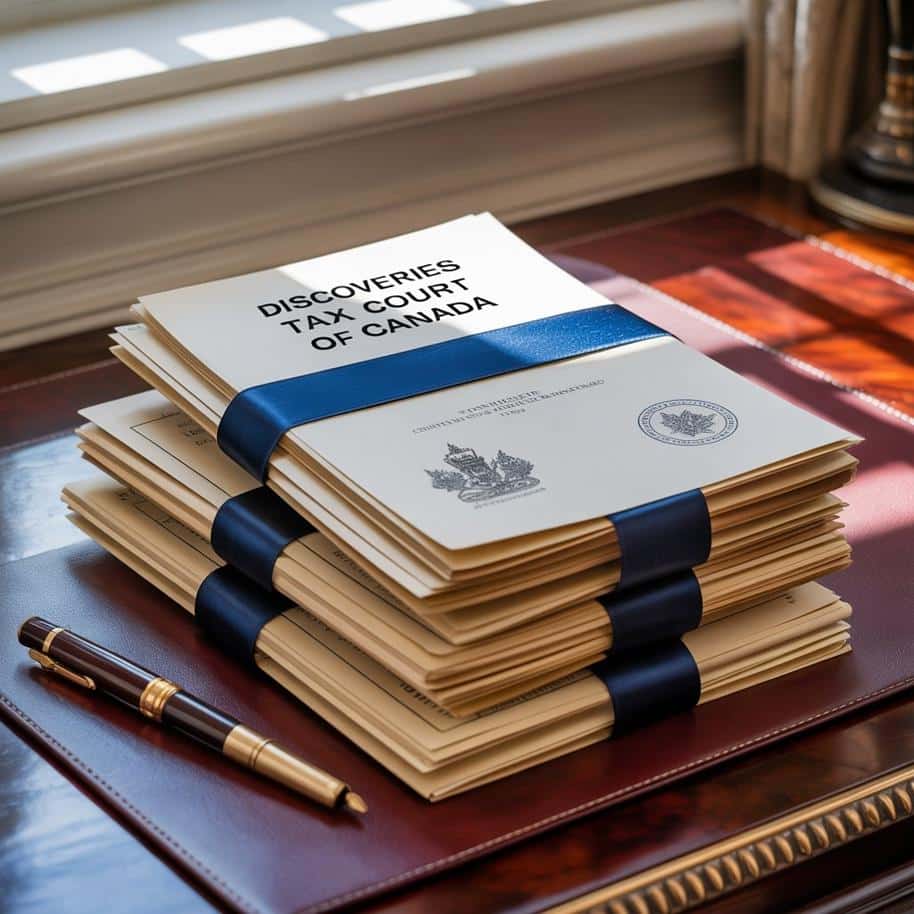Introduction: The CRA’s Taxpayer Relief Program
A Canadian taxpayer may face penalties and interest owing to the Canada Revenue Agency (“CRA”) for many reasons, including late filing a return and failing to pay a tax debt on time. Subsection 220(3.1) of the Income Tax Act empowers the Minister of National Revenue (through the CRA) with the discretion to grant, on an application made by a taxpayer, relief from penalties and interest owing in connection with any tax year falling within the ten calendar years that precede an application.
Subsection 220(3.1) grants the Minister of National Revenue unfettered powers to waive penalties and interest. The CRA’s Information Circular IC07-1R1, “Taxpayer Relief Provisions” (August 18, 2017) sets out its own administrative guidelines (often referred to as the “Taxpayer Relief Program”) for applying this provision, and choosing to grant relief. Generally speaking, there are three main categories of circumstances for which the Minister may grant relief from penalties and interest: (a) extraordinary circumstances beyond a taxpayer’s control such as disasters, civil disturbances, serious illness or accident; (b) actions of the CRA including processing delays, delays in providing information, and undue delays in resolving an objection or completing a tax audit; and (c) inability to pay or financial hardship. However, each application must be considered on its merits, even if a taxpayer’s circumstances do not squarely fall into the above-noted categories, and the CRA will generally consider other circumstances as well.
In the case of Maloney v. Canada (Attorney General), 2024 FC 1474, the Federal Court found that the CRA committed a error by unfairly downplaying its actions that directly led to interest accumulating on a taxpayer’s outstanding debts. In doing so, the Federal Court has added to a growing body of case law that will hopefully liberalize the CRA’s view on taxpayer relief applications on grounds of CRA delay.
This article will proceed in four parts. First, this article will set out the general facts concerning the Applicant’s case in Maloney. This article will then explore the principles of judicial review, and the general arguments presented by the Applicant (taxpayer) and the Respondent (i.e. the Canadian tax litigation lawyers of the Department of Justice who represent the CRA) before the Federal Court. This article will then explore the judgement of the Federal Court, rendered in favour of the taxpayer, and the compelling reasons that found the CRA had mis-stepped when administering its own policy. Finally, this article will conclude with some tips on applying for taxpayer relief as well as obtaining documents under Rule 317 of the Federal Courts Rules for your own judicial review application, and some frequently asked questions concerning taxpayer relief and judicial review applications before the Federal Court.
The Facts of Maloney
In 2003, the Applicant was convinced to buy into an investment scheme (the “IFX Markets Ltd.” scam) perpetrated by Mr. Charles Morrison, who was convicted of fraud by the Manitoba Securities Commission for defrauding investors. From 2003 to 2005, the Applicant paid approximately $213,000 into the scheme, and received a number of tax refunds for his 2000 through 2003 taxation years from the CRA.
In 2007, the CRA disallowed the Applicant’s 2000 through 2003 business losses because they were fraudulent. The Applicant filed a Notice of Objection in 2007 to challenge the CRA’s denial of his losses. The CRA held the Applicant’s objection in abeyance for 8 years, because a related case involving an unrelated taxpayer had been chosen as the lead case for deciding issues on losses stemming from the IFX Markets Ltd. scheme. On February 2, 2015, the Applicant’s objection was denied.
On September 6, 2018, the Applicant filed a taxpayer relief application (previously known as a fairness application) with the CRA, appealing for relief from interest accrued since the 2008 taxation year. (The CRA, under law, only has the power to waive interest that has accrued over the 10 calendar years that precede a relief application.) The Applicant appealed for relief in part on grounds the CRA was itself responsible for undue delay in resolving the Applicant’s Notice of Objection. In particular, the Applicant had no control over how the CRA held his case in abeyance and had a right to his objection being heard “with all due dispatch” under law, which was not honoured by the CRA.
On November 26, 2021, three years later, the CRA issued its first decision, denying interest relief. The first decision-maker did so on grounds the Applicant was not reasonably prevented from addressing his tax obligations, and that the CRA was not responsible for any undue errors or delays that contributed to interest accumulating. The first decision made no mention of the history of the Applicant’s objection, nor did it include any information on what the first decision-maker reviewed to rule on the application.
Following the first decision, the Applicant wrote to the CRA to request a second review by an independent CRA agent. The Applicant also wrote several letters to the CRA broadly, and even to the Minister of National Revenue herself, (at the time) the Honourable Marie-Claude Bibeau, which went substantively unanswered.
The Applicant’s request was denied on second review on February 12, 2024. The second decision granted partial interest relief accumulated from February 2, 2015, or the date the Applicant’s objection was denied, to the date the second decision was rendered. However, the Minister refused to grant interest relief for any prior period, on grounds the Applicant had the option to make payments toward his tax debt and chose not to. The Applicant then self-filed a Notice of Application to the Federal Court to request judicial review of the CRA’s second decision.
The Principles of Judicial Review
Discretionary decisions of a Minister can be challenged by way of judicial review to Federal Court. A decision made by the CRA concerning a taxpayer relief application is not an “assessment” that is appealable to the Tax Court of Canada. Rather, section 18.1 of the Federal Courts Act sets out that the discretionary decisions made by a Minister, including the Minister of National Revenue, are the subject matter of judicial review before the Federal Court. For example, a decision to grant or refuse to waive penalties and interest pursuant to subsection 220(3.1) of the Income Tax Act is a discretionary power that can only be challenged through judicial review.
With judicial review, the Federal Court is not responsible for reconsidering, reweighting, or reassessing information reviewed by a decision-maker. Rather, the Federal Court must evaluate if the decision made was reasonable after weighing the rationale provided by a decision-maker against available evidence. The Federal Court is also empowered to protect the procedural fairness of a review process. If a decision was unreasonable or a proceeding was procedurally unfair, the Federal Court can “quash” that decision, and send the case back for a redetermination. The Federal Court cannot make a decision for the Minister and can only require the Minister to reconsider the matter with additional guidance.
The Issue at Appeal
The Applicant filed for judicial review of the CRA’s second decision. There were two key issues brought before the Federal Court: (i) the reasonableness of the second decision; and (ii) whether the Applicant’s rights to procedural fairness were breached. The taxpayer argued that the CRA had breached procedural fairness by failing to disclose documents related to the first review in advance of second review, and that the second review decision was unreasonable because it failed to adequately address the Applicant’s arguments concerning the CRA’s responsibility for delays in processing his Notice of Objection.
In response, the Canadian tax lawyer for the CRA at the Department of Justice argued the following:
- The Applicant’s rights to procedural fairness were not breached—the taxpayer requested information that did not relate to his relief request, and would not have affected the outcome of his relief request.
- The taxpayer chose to object to the reassessments, and knowingly allowed a tax debt to continue accruing interest, and therefore the CRA was entitled to find that cancellation of interest was not warranted.
- The taxpayer failed to adduce any defects in the decisions made by the CRA to render them unreasonable.
The Decision of the Federal Court
Ultimately, the Court found in favour of the taxpayer, finding that (i) the taxpayer’s rights to procedural fairness were breached, and (ii) the second decision was unreasonable. However, the Court did not find the decision-maker was biased, or that the alleged breach of the Taxpayer Bill of Rights was reviewable.
First, the Court concluded that procedural fairness was breached. The Court also rejected the CRA’s argument that the failure to disclose those documents had no bearing on procedural fairness, because the documents in question would not have related to the relief request, and that enough information existed to render a decision. The Court observed that the ultimate question for procedural fairness is whether an applicant knew the case to meet, and had a full and fair chance to respond. The taxpayer in Maloney had repeatedly requested documents and internal notes to understand how the first decision was made, and those requests went unsatisfied. The duty to disclose exists regardless of the CRA’s belief in the merit of the request, and the failure to provide internal documents explaining how the first decision was made prevented the taxpayer from responding to the CRA’s concerns meaningfully.
Second, the Court concluded the decision was unreasonable. The Court will intervene to overturn an unreasonable decision if it is satisfied there are sufficiently serious shortcomings in the decision made rendering it unintelligible and unjustifiable. The Court observed the decision-makers at the CRA found that the Applicant was solely responsible for the interest that accumulated because of his choice to file a Notice of Objection. But the Court concluded this failed to properly consider the role the CRA had in “undue” delays resolving an objection, which is a clear basis for waiving interest under the CRA’s own administrative guidelines embedded in IC07-1R1, “Taxpayer Relief Provisions”. Further, the decision-makers completely failed to respond to the taxpayer’s central arguments for relief, on grounds that (i) the delays dealing with the taxpayer’s objection were the main cause of interest accruing; (ii) the processing of the taxpayer’s objection fell outside normal processing times (at the time, 12 to 18 months); and (iii) the delay was principally caused because the CRA chose to wait for an unrelated taxpayer’s case to resolve, which was outside of the taxpayer’s control.
The Court did not find bias, however. The threshold for finding bias is a high bar, and requires the Applicant show that “a reasonable and informed person, viewing the matter realistically and practically—and having thought the matter through—would conclude that it is more likely than not that the decision maker, whether consciously or not, would not decide the matter fairly”. While the Applicant’s frustration with his treatment by the CRA is understandable, his arguments were purely speculative. As well, the argument the CRA had breached the Taxpayer Bill of Rights was unfounded. The Courts have repeatedly affirmed the Taxpayer Bill of Rights are simply a service pledge with no force of law.
Pro Tax Tip: Develop the Tribunal Record Early in Case Judicial Review is Needed
The Taxpayer Relief Program allows a taxpayer to seek relief from interest and penalties in a number of circumstances, including: (a) extraordinary circumstances beyond a taxpayer’s control; (b) actions of the CRA (c) inability to pay or financial hardship; and (4) other circumstances as applicable. The Minister of National Revenue (through the CRA) is required to weigh a taxpayer’s circumstances and evidence fairly when deciding whether to grant relief. Any decision made by the CRA must be rational, and adequately explain why a decision was made in light of the evidence. A gap in logic, or a breach of procedural fairness, can support an application for judicial review.
But, as discussed above, the Federal Court will only consider fresh evidence in a judicial review case in limited circumstances. The purpose of judicial review is to police the fairness of the CRA’s program, and not to decide whether to grant relief to a taxpayer. To do so, the Federal Court will usually only consider the same facts and evidence that the CRA itself had access to when making a first decision or a second decision.
It is therefore crucial for the taxpayer’s Canadian tax lawyer to develop the record of facts and evidence early during the first and second review stages of a taxpayer relief application. The CRA is required to meaningfully consider that evidence when making a decision. If it fails to, then the Federal Court may have the grounds to step in.
This is especially important given that at judicial review, a taxpayer is entitled to request the CRA’s own records on a decision.
Under Rule 317 of the Federal Courts Rules, an applicant seeking judicial review of a discretionary decision is entitled to request all materials in a tribunal’s possession that form the subject matter of an application. (Under law, the CRA itself qualifies as a “tribunal” if an agent of the CRA rendered a decision under review.) These records may include, among other documents, the materials and information the tribunal may have relied on to render a decision (including internal notes, memorandums, letters, and other submissions).
A request under Rule 317 can be included in a Notice of Application itself filed by an applicant to begin the judicial review process. Once filed, the tribunal must submit a certified copy of those materials to the Federal Court itself, and to the applicant, within 20 days. In contrast, the deadline for an applicant to serve and file any affidavits and supporting evidence concerning a judicial review application is 30 days following service of the Notice of Application.
Any applicant seeking review of a discretionary decision made by the CRA, including a denied taxpayer relief request, ought to include a request under Rule 317 with any application being filed. Reviewing those records may show inconsistencies, or mistakes, in how evidence was considered by the CRA which can support a winning case (or settlement prior to a hearing). The earlier an applicant receives those records, the better of an applicant will be strategizing for the later steps in the application process.
FAQs
What is judicial review?
Discretionary decisions of the Minister of National Revenue under the Income Tax Act can be challenged by way of judicial review to Federal Court under section 18.1 of the Federal Courts Act. The Federal Court can evaluate if a decision-maker’s reasoning rendered a decision unreasonable, or if an applicant’s rights to procedural fairness were breached. The Federal Court cannot generally make a decision for a tribunal, and can only “quash” the decision, by sending the applicant’s file back for an additional round of review with additional guidance.
What steps can I take if I believe the CRA’s decision on my Taxpayer Relief applicaton was procedurally unfair?
Keep records of all communications with the CRA, especially those related to any accommodation requests. If you believe the CRA’s decision is procedurally unfair, then we highly recommend that you seek legal tax advice early in the process, ideally when the CRA initiates the review. An experienced tax lawyer can advise you on the strength of your case, help you meet documentary requests, and guide you on your procedural rights.
Disclaimer: This article just provides broad information. It is only up to date as of the posting date. It has not been updated and may be out of date. It does not give legal advice and should not be relied on. Every tax scenario is unique to its circumstances and will differ from the instances described in the articles. If you have specific legal questions, you should seek the advice of a Canadian tax lawyer.



